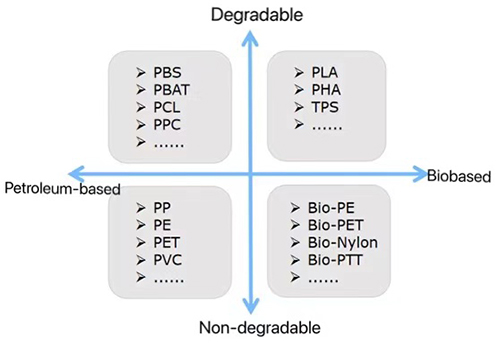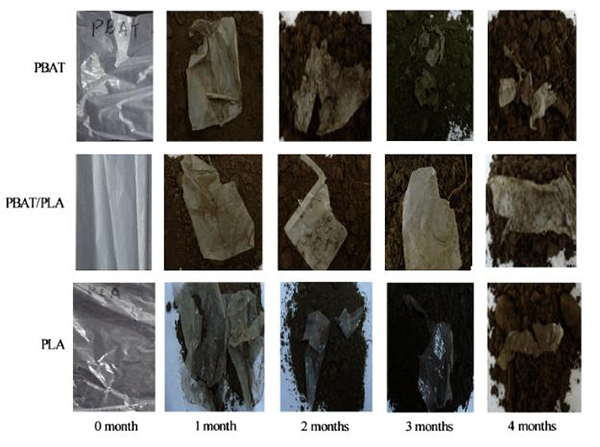©Copyright 2019 SIKO POLYMERS (SUZHOU) CO., LTD All rights reserved.Site Map Powered by iwonder.cn
- Email Uskevin@sikopolymers.com


Biodegradable plastics
The definition of biodegradable plastics, it is to point to in nature, such as soil, sand, water environment, water environment, certain conditions such as composting and anaerobic digestion conditions, the degradation caused by microbial action of the existence of nature, and eventually decomposed into carbon dioxide (CO2) and/or methane (CH4), water (H2O) and mineralization of the containing element inorganic salt, and the new biomass (such as the body of microorganisms, etc.) of plastic.

Several common biodegradable plastics
material | Raw material source | performance | Application field | Degradation of way | Biochar content |
PLA | Starch, sugar, | Hard, brittle, poor usability | Packaging materials, fiber, food and beverage, biological medicine, etc | Industrial composting | 100% |
PBAT | Petroleum, coal, and butanediol can come from starch | Soft, tough, good usability | Packaging materials, agricultural film, etc | Industrial composting, home composting | 0%(petroleum based)~36.5%(butanediol bio-based) |
PBS | Petroleum, coal, butanediol, and succinic acid can be derived from starch | Hard, brittle, poor usability | Packaging materials, tableware, agricultural film, biological medicine, etc | Industrial composting, home composting | 0%(petroleum based)~50%(butanediol or succinic acid bio-base)~100%(butanediol or succinic acid bio-base) |
PHAs | Starch, sugar, | The price is expensive and the stability is poor | Packaging materials, fiber, biological medicine, etc | Industrial composting, home composting, sea water degradation | 100% |
PPC | Oil, coal, carbon dioxide can come from biomass | Excellent barrier performance, low glass transition temperature, can not be used alone | Packaging materials, agricultural film | Industrial composting | 0%~25%(carbon dioxide bio-based) |
PGA | Oil and coal | Hard, brittle, poor usability | Packaging materials, biomedicine, etc | Industrial composting, home composting, sea water degradation | 0% |
PCL | Oil and coal | Low melting point, good toughness, low strength | Packaging materials, biomedicine, etc | Industrial composting, home composting, sea water degradation | 0% |
starch | plant | Can not be used alone, but can be used as a filler, reduce cost | Packaging materials, tableware | Industrial composting, home composting, sea water degradation | 100% |
Productivity and distribution of biodegradable plastics
According to the latest data released by the European Bioplastics Association in September 2019, as of September 2019, the global annual production capacity of biodegradable plastics is 2.144,000 tons;
PLA (polylactic acid) was 628,000 tons, accounting for 29.3%;
PbAT (polyadipic acid/butylene terephthalate) was 60.68 tons, accounting for 28.3%;
Starch-based degradable plastic was 96.27 tons, accounting for 44.9% of the global biodegradable plastic capacity.
Biodegradable condition
Soil degradation
PBAT, PHA, PCL and PBS could be completely degraded after 5 months.
The degradation rate of PLA materials is relatively slow, only 0.23% a year.
PLA and PKAT can be completely degraded in about half a year after blending.

The water degradation
PHA and PKAT can be completely degraded in 30~60 days under the simulated seawater condition of 25℃±3℃.
Making a diligent search for the best product might be a great task that is demanding and challenging sometimes.
We are aware of this and that is why we are reaching out to you with the best quality biodegradable plastics manufactured by our highly skilled and experienced personnel using advanced technology. Kindly click here to check out and order your high-quality biodegradable plastics products and you will be glad you did.